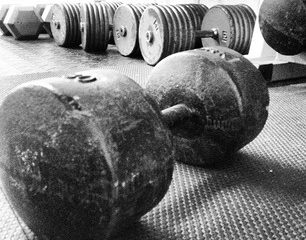21 ways to bring up a lagging body part
One of the most frustrating things you will ever experience in the gym is when you realize that nothing is working. You’ve tried everything (or so you think) and nothing seems to click.
You do all sorts of pressing movements but your chest remains flat. You do curls for the girls but your biceps lack peak. Every Wednesday you do shrugs but your traps lack development.
So what’s going on? How do you bring up a lagging body part?
The first thing you need to do is realize that you haven’t tried EVERYTHING. The following is a list that contains everything I have learned over the past 11 years of training. This information is mainly based off of my own weakness (chest) that I challenged myself to bring up.
I know what’s it like to feel frustrated when nothing seems to work. It took me just over 5 years to transform my chest from a weakness into a strength.
Understand that this information is just a starting point. Even if you implement all of this advice, it could still take years to see the desired results.
Just keep swinging! If you never give up, you will never fail. Enjoy!
Here are 21 ways to bring up a lagging body part.

1. More volume.
More volume is usually the best place to start. Anytime a trainee has come to me asking for advice on how to address a weak body part, I always ask the same question.
“What are your workouts like now?”
100 % of the time they are not doing enough volume.
They need more of everything. More reps. More sets. You name it.
10-12 reps needs to be replaced with 20-25 reps.
3 sets needs to be replaced with 10 sets.
Straight sets must give way to super sets and giant sets.
Super sets are when you combine exercises into one set.
Instead of doing 3 sets of flat bench press, do 4 sets of flat bench press super set with 4 sets of dumbbell pullovers.
In this case: 1 super set = 1 set of flat bench press immediately followed by 1 set of dumbbell pullovers.
Giant sets are when you combine 3 or more exercises into 1 “giant” set.
So instead of doing 3 sets of flat bench press, you could potentially do 4 sets of flat bench press giant set with 4 sets of dumbbell pullovers and 4 sets of incline dumbbell flies.
In this case: 1 giant set = 1 set of flat bench press immediately followed by 1 set of dumbbell pullovers which is then followed by 1 set of incline dumbbell flies
In the beginning, volume is your best friend. The muscle is still fresh and untrained. You physique has a ton of potential to grow. Make the most of it.
2. More frequency.
Frequency refers to how often you train a particular body part. Your muscles get bigger the more you use them. So common sense should tell you that for a weak body part, you need to train it more frequently.
Now you have two ways you can do this.
The first way entails hitting the weak body part with 2 full volume workouts over the course of your weekly split. If you go this route, you will tear down the most muscle. Therefore, it is crucial than you increase your protein and complex carbohydrate intake. Furthermore, you have to spread out your workouts as much as possible.
For instance, if you want to train back twice a week, have your first workout on Monday and your second workout on Thursday or Friday.
The second way involves you hitting the body part everyday with less volume. So in essence, you’re not subjecting your body part to a full workout on any particular day but rather consecutive days of “micro” workouts.
Both ways work. However, I personally have had more success bringing up a lagging body part by implementing separate full-volume workouts days.
3. Prioritize it.
Your workouts should begin with your weak body parts first because this is when you are fresh for that particular day.
For instance if traps are one of your weaknesses, you should not train them at the end of back day (as many trainees often do).
You should start off back day by training traps. This would also be beneficial to your back training because if your traps are already fatigued, this would force your lats to do all of the work.
4. Start your week off with it.
Monday is Universal Chest Day in the gym. However, it should really be Universal Weakness Day. Yes, when you have a weak or lagging body part, you should hit it on your first day of training. Conversely, strong body parts can be pushed back to the end of the week.
This is when you are fresh and well-rested.
You might also want to consider training it on Sunday because this is when the gym is usually empty.
5. More machines.
Free weights have their place in building size and density but they are inferior to machines in a lot of ways.
Complete isolation of the targeted muscle just isn’t possible with free weights because there is a part of your focus diverted towards stabilization and grip. This is great for overall strength but not so much if you want to maximize development of a particular muscle.
“Feeling” the muscle work is the ultimate path to growing the muscle.
When you have a muscle that just won’t grow, it’s because you are not “feeling” the muscle work. You have to develop that “feel” and that’s where machines come into play.
Machines eliminate the need to expend energy on stabilization and to a large extent, grip. They isolate the muscle so that it is the muscle that does the work.
Take barbell curls for instance. Barbell curls are a great exercise for building bicep size. However, if biceps are a weakness and you have “zero” feel for the muscle, it’s a terrible exercise. Barbell curls tax your grip, utilize your forearms, and to a lesser extent, work your front deltoids as well.
You would be far better served by replacing that movement with another one such as machine preacher curls, which puts 100% of the lift on the biceps.
6. Pre-exhaust it.
Pre-exhausting the muscle entails starting off your workout with light isolation movements before you utilize heavier compound movements.
This is a great way of developing that “feel” because the key is to focus all of your efforts on form and taxing the muscle.
Stretch long and deliberate. Contract hard and hold it.
Pre-exhausting the muscle is a way of doing your due diligence by “preparing” the muscle for the real work (heavy compound movements).
Here are some examples of pre-exhausting movements:
Chest- Pec Deck, Cables Flys, Dumbbell Flys
Back- Rope Pullovers, Barbell Pullovers, Cable Rows
Quads- Leg Extensions, Walking Dumbbell Lunges
7. Work faster.
Sometimes you just need to work faster. Lift the weight faster. Don’t be afraid to utilize a “pinch” of momentum to find that sweet spot in your form.
This can be useful for shoulders, in particular when you are doing laterals and cable work.
8. Work slower.
Sometimes you just need to work slower. Make the entire movement deliberate. Hold it a just a little bit longer.
9. Less rest.
One of my favorite stories in bodybuilding is what transpired the very first time Phil Heath (current 6-time Mr. Olympia) trained with Jay Cutler (4-time Mr. Olympia). It was July 2006.
Phil Heath was a rookie in the IFBB and Jay Cutler was already an all-time great who would go on to beat Ronnie Coleman for his first title later that year.
Simply put, Jay Cutler took Phil Heath to school. It was a back workout. The combination of weight, volume, and SPEED at which they worked left Heath in the dust.
He eventually had to switch to lighter weights. But he was still gasping for air.
That was the day Phil Heath truly learned how to be a professional bodybuilder.
Most people bullshit in the gym and rest too long. But this game is won with intensity and SPEED is a surefire way to amp it up. When you take less rest time in between sets, this taxes the muscle faster.
10. Stretch in between sets.
Stretching the muscle in between sets completes the job of tearing down the muscle. You already do the majority of the muscle breakdown during the lifting portion. This is another element to add if you are having trouble growing.
11. Isolate it (rest day before and after).
Contrary to popular belief, you don’t actually grow in the gym. You break down the muscle in the gym.
You actually grow in your sleep and recuperate.
Sometimes you just need to completely isolate your weak body part by not only giving it its own day, but also “sandwiching” it between two rest days.
This insures that you are both fresh before the workout session and able to recuperate after that damage is done.
12. Adjust your form.
As you progress in the muscle building game, you will find that you have a particular style or “sweet spot” when it comes to your lifting form.
This will change over time. This will also vary from body part to body part.
If you’ve been lifting with a particular style or form and it’s not working, you have to change it up
13. Change your mindset.
What are you telling yourself when you are actually lifting weights?
Hopefully, it’s some sort of affirmation.
Affirmations come in many forms and can be used to guide your style of lifting too. Sometimes we get caught up in lifting that we don’t think. When we don’t think, we can develop poor habits and sloppy form.
In my experience, it’s helpful to use affirmations as a way of staying on task and executing proper form. Here are 2 I have used over the years:
Shoulders- “Your hands are hooks guiding the weight up.”
Back– “Lead with the elbows.”
14. Focus more.
Don’t resort to escapism. When you’re training your lagging body part, focus your entire consciousness on that.
“Am I feeling this movement work the muscle?”
“Can I feel the muscle stretch and contract?”
These are the questions that should run through your mind.
If you are unable to focus, stop what you are doing, even if this means leaving the gym altogether. I am at the point now where if I am unable to focus or feel the muscle on a particular day, I WILL LEAVE THE GYM at the drop of a hat.
15. Train at different times of day.
The time of day that you train can make a big difference in how you progress in the gym based entirely off of “feel.”
For me, I cannot lift weights in the morning. I just can’t. I have zero feel for the muscle and as a result, I try to overcompensate with grip.
I need to be fully awake and have a few meals in me to fully feel the muscle doing the work.
My ideal training time is anytime between 1 PM and 6 PM. Find your time and stick with it.
16. Train in heat.
Heat makes you sweat. Most importantly, it activates those fast twitch muscle fibers. The cold is the worst thing for training because it’s harder to sweat and activate your muscle fibers.
I love training in layers. That’s why I’m always rocking sweatpants and a thermal in the gym, even when it’s 100 degrees outside.
These are my favorite thermals to wear because they are super comfortable and make you sweat relatively quick: 32 Degree Men’s Thermal
17. De-emphasize grip.
Grip strength is important but sometimes it can hinder your gains if too much focus is emphasized on the grip.
This is the case with any type of pulling or curling movement (back/biceps) and shoulder laterals.
That’s why it’s good to experiment with a thumb over grip once in a while. This de-emphasizes recruitment of the top of the forearm muscle.
18. Spend more time in the gym.
In the beginning, the answer is more volume. The crazier you can make your workouts the better. The more you put in, the more you get out.
19. Spend less time in the gym.
Sometimes you have to start lifting smarter and with more precision. Over time, this game becomes completely about quality.
20. Slash, burn, and start over from scratch.
If nothing seems to be working, STOP. Burn your entire infrastructure down and start from scratch, which leads me to the final point.
21. Don’t be afraid to try ANYTHING.
Bodybuilding is a thinking man’s game and those who think outside the box are rewarded. Don’t be afraid to kick conventional wisdom to the curb and treat the gym like your playground. You make the rules and anything goes.
- Deadlift at the end of a back workout.
- Squat at the end of a leg workout.
- Super set chest with shoulders.
- Train forearms before biceps and triceps.
- Superset traps with shoulders.
- Use cable crossovers as a primary mass builder.
- Do 100 rep drop sets.
- Do 3 rep sets.
You name it. I’ve made it work. You name it. You can make it work too.
So there you have it. 21 ways to bring up a lagging body part. I hope you have found this article helpful. It took me years of endless frustration and experimentation to master the information in this article. Now you have it ready for use just in case you find out you have a lagging body part of your own.
Also, be on the lookout for both Of Tyrants & Tellers and The Of Tyrants & Tellers Diet. They will be available soon!














No Comment